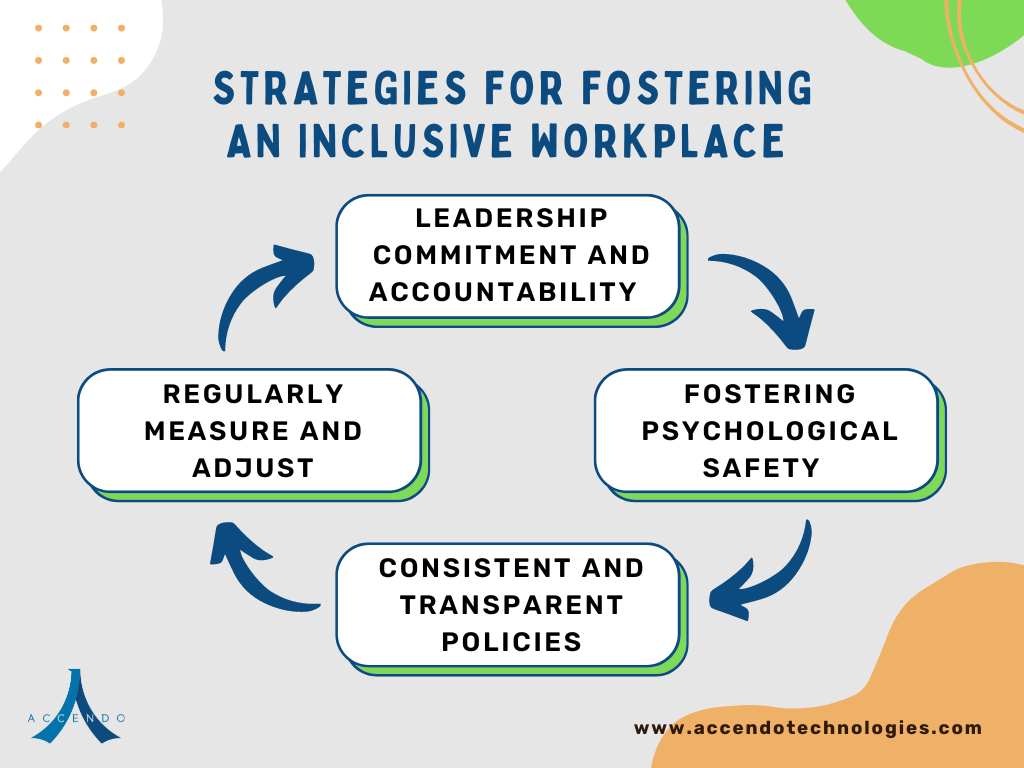Ever wondered why your diversity efforts do not seem to translate into real inclusivity? Diversity is important, but the real challenge is how to create a work environment where all employees feel valued, respected, and empowered. Our article explores the challenges in fostering inclusivity after the hiring process and provides strategies to overcome them. By focusing on engagement and retention through inclusive practices, companies can build a more collaborative and productive workplace.
The State of Inclusivity in Today’s Workplace
A truly inclusive workplace is one where all employees feel respected, empowered, and able to contribute meaningfully.

However, the issue lies in the gap between initial efforts and long-term success. Many companies are eager to introduce diversity and inclusion (D&I) initiatives. Yet many fall short because tokenism often replaces genuine inclusion. This results in employees from underrepresented groups feeling isolated or unsupported after their initial onboarding.
Often, it is because companies focus too heavily on diversity recruitment but neglect long-term inclusion strategies. They may celebrate diverse hires but underestimate the value of day-to-day behaviours and micro-experiences that foster a true sense of belonging. This imbalance can lead to a workplace where diversity is visible, but inclusivity is missing.
The Challenge in Creating and Maintaining Inclusivity
So, why do companies struggle to maintain an inclusive workplace?
Workplace cultures are slow to evolve, especially in long-established companies. Leaders often find it difficult to change entrenched behaviours, attitudes, and traditions that may unconsciously exclude or marginalise certain groups.
For example, dominant communication styles in the workplace may alienate employees who come from different cultural or social backgrounds. Without an intentional shift in these behaviours, inclusion can remain an elusive goal.
While D&I policies may be in place, many companies lack strong leadership commitment to enforce these initiatives. In some cases, leadership support is superficial, leading employees to feel that inclusivity efforts are more performative than genuine. The absence of accountability can be damaging.
Additionally, inclusivity is not always applied evenly across a company. A team may fully embrace inclusive practices, while another remains resistant to change. This inconsistency creates unequal experiences for employees across different teams and regions, diminishing the overall effectiveness of D&I strategies.
Companies with inclusive cultures are 8 times more likely to achieve better business outcomes.
A study by Harvard Business Review
When employees feel excluded, they are more likely to disengage, lowering productivity and increasing turnover. They will not share ideas, collaborate effectively, or contribute to innovation.
Strategies for Fostering and Maintaining an Inclusive Workplace
Here are four key strategies to help build and maintain an inclusive workplace.

Leadership Commitment and Accountability
Inclusivity must start at the top. Leaders should actively champion inclusivity and model inclusive behaviours within the company. This means holding leadership accountable for inclusivity goals, with measurable outcomes tied to performance reviews.
For example, Microsoft has made inclusivity a core leadership competency and offers bonuses based on inclusivity metrics. When leaders are invested in these goals, employees are more likely to follow their example.
Fostering Psychological Safety
Employees need to feel safe expressing their opinions and ideas without fear of negative consequences. Psychological safety is crucial for inclusivity, as it encourages open dialogue and participation from all team members.
Google’s Project Aristotle found that psychological safety is the number one factor behind successful teams. Companies can foster this safety by encouraging open communication channels, regularly checking in with underrepresented groups, and ensuring that concerns are addressed in a timely manner.
Consistent and Transparent Policies
Inclusivity should be supported by clear, consistent, and transparent policies that apply to everyone in the company. This involves standardising practices around communication, feedback, and decision-making to reduce bias and promote fairness.
Blind recruitment processes and anonymised feedback are great examples of policies that focus on merit rather than identity. These systems help to level the playing field and create a more equitable workplace.
Regularly Measure and Adjust
Like any business strategy, inclusivity efforts must be measured and refined over time. Continuous assessment through employee feedback, exit interviews, and key performance indicators (KPIs) can provide insights into how inclusivity initiatives are performing.
Data-driven adjustments ensure that companies are meeting their goals and addressing any emerging challenges. For instance, engagement surveys can track whether employees feel heard, included, and supported.
Conclusion
Creating and maintaining an inclusive workplace is a journey, not a one-time initiative. Companies must move beyond symbolic efforts and embrace a long-term commitment to fostering inclusivity in every facet of their business. By prioritising leadership accountability, promoting psychological safety, and consistently measuring outcomes, companies can build a truly inclusive culture that empowers employees and drives business success.
Page Contents






